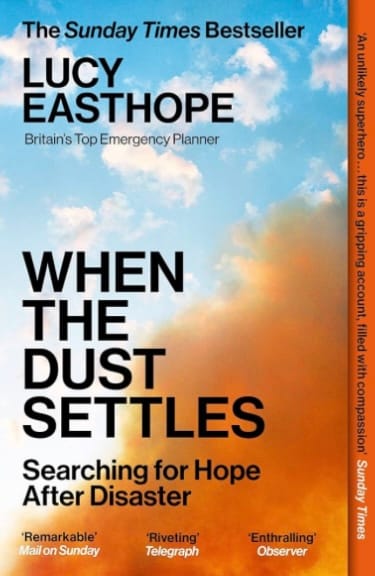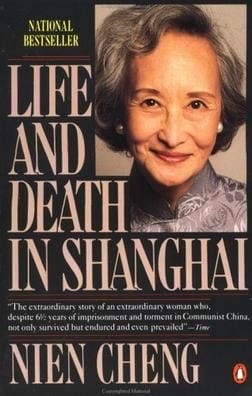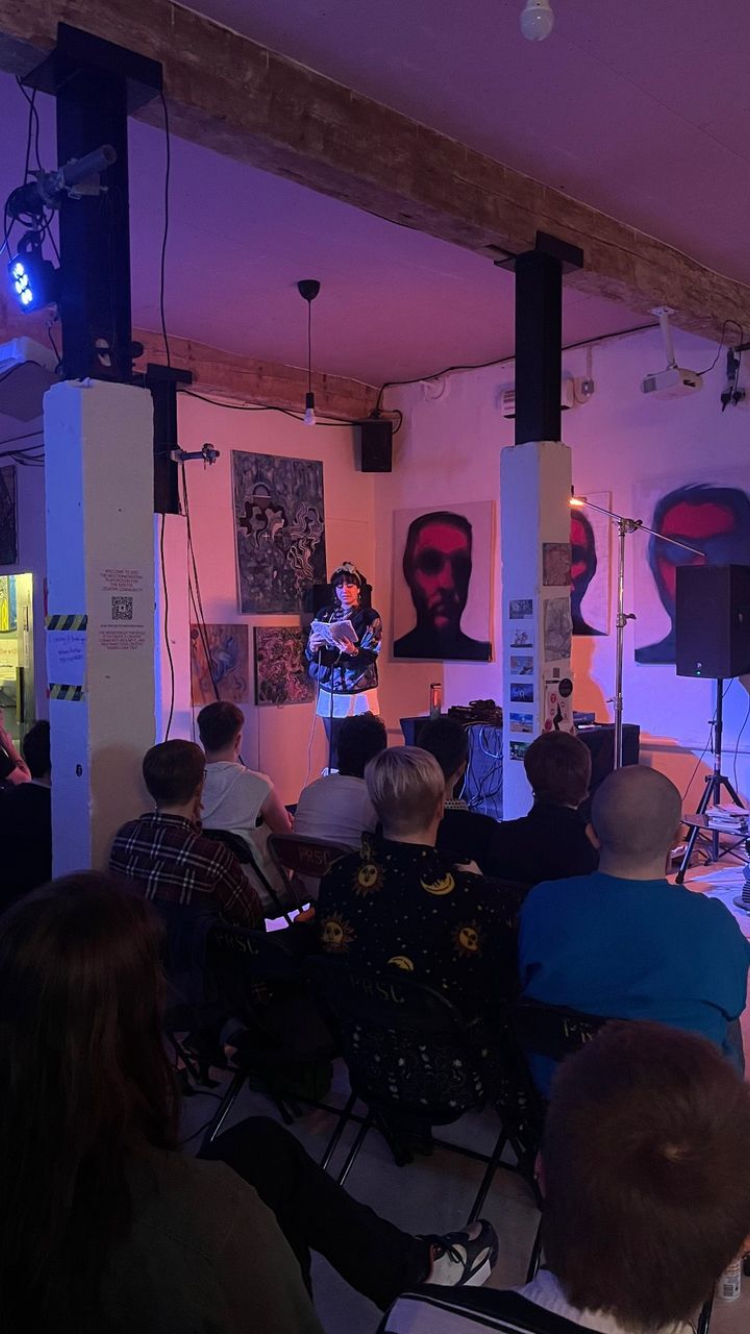By Max Bradley-Cole, Second Year, Film and Television
As we attempt to carry on upholding the spirit of Women’s History Month throughout the year, here are three memoirs that chronicle the perseverance, compassion, and strength of three incredible women.

When The Dust Settles by Lucy Easthope
Lucy Easthope found her calling after the Hillsborough disaster. Born and raised in Liverpool, Lucy was a child when the 1989 FA Cup Semi-Final descended into chaos as a result of fatal overcrowding. She saw the subsequent pain and anger reverberate through the city and witnessed the devastating effects that unresolved trauma brought to her community. It was in the midst of this tragedy, that Lucy decided to dedicate her life to others, to alleviate and prevent such suffering from happening again.
Lucy Easthope is the first responders’ first responder. A woman whose job is so intense, you wonder why anyone would want to do it. As Britain’s top emergency planner and a world-leading authority on disaster response, Lucy Easthope has curated relief efforts for 9/11, the 2004 tsunami, the 7/7 bombings, the 2011 Fukushima nuclear disaster, Grenfell, COVID and more. As is written on the blurb, ‘when a plane crashes, a bomb explodes, a city floods or a pandemic begins, Lucy Easthope’s phone starts to ring.’ Lucy’s writing is sharp, witty, and a punch in the gut. It’s heartbreaking, hopeful, and human.
Lucy’s writing style is deeply engaging and whilst it’s occasionally unsettling and frequently blunt, it maintains a dark humour that is oddly comforting. Throughout the book, Lucy guides you through stories of hardship and immerses you in masses of information and yet it still manages to feel as if you’re just having a chat with a friend. You get the sense that Lucy is an incredibly compassionate and caring woman with wells of patience and consideration. She’s a fighter and what becomes clear as the book progresses is that she is consistently battling against the Conservative government and their ineptitude. With the onset of austerity, Lucy’s ability to effectively respond to disasters and to care for its survivors is greatly affected. Nevertheless, she remains undeterred, and her steadfast devotion to people and the considerable hope she brings to their lives is something to be revered.
She speaks of Hiraeth, a Welsh word for which there is no direct English translation. ‘Hiraeth is a longing for a place to which there is no return, an echo of something that can never be found, a heartsickness for something that no longer exists and a time that can never be gone back to.’ After a disaster, loss surrounds everything. The tangible losses of a person, a city, a home. But also, those intangible losses, safety, trust, and community. Lucy reminds us that the one thing we should never lose in disaster is hope. I think that Lucy’s last name, Easthope, is an aptronym – A person’s name that is regarded as amusingly appropriate to their occupation. She writes that for survivors it is imperative they have ‘a horizon to swim towards. The importance of trying to build something afterwards. But to stay living, breathing, there had to be a purpose, a future, a bluer sky.’
The sun rises in the East, the dawn brings with it a new day, a new beginning, and a renewed hope. For those that have survived disaster, hope is integral to rebuilding your life. Lucy’s name reminds survivors to look East to the rising sun, and towards an end to the darkness of disaster that had once eclipsed their life.

Know My Name by Chanel Miller
It was 2016 and Brock Turner was just found guilty of felony sexual assault and sentenced to a measly 6 months in Santa Clara County Jail followed by three years of probation. A county jail in America generally holds people who are pending a hearing, unable to post bail, awaiting transfer or convicted of crimes of ‘low severity’ which hold relatively short sentences. One stipulation in a county jail is that for every day of good behaviour, a day is knocked off your sentence. So, Brock Turner ultimately served 3 months for sexually assaulting a woman. A woman who was referred to in the courtroom as Emily Doe. Dubbed the ‘woman in Standford sexual-assault case’ and described as the ‘unconscious intoxicated woman’. A woman who ultimately decided to redefine her narrative from victim to survivor. A woman named Chanel Miller.
The original cover art of the book was inspired by kintsugi, the Japanese art for mending broken pottery with powdered gold. The cracks are emphasised instead of covered up and this highlighting of the cracks and subsequent repairs are evidence of the value, life, and love of a belonging. Christy Bartlett writes of Kintsugi, ‘the vicissitudes of existence over time, to which all humans are susceptible, could not be clearer than in the breaks, the knocks, and the shattering to which ceramic ware too is subject.’ Vicissitude – the change of circumstance or fortune, typically one that is unwelcome or unpleasant. Just as the ceramic shatters, so too did Chanel Miller the day she was assaulted by Brock Turner. Yet she did not remain shattered. Chanel’s perseverance, her family, her friends, and the millions that read and responded to Emily Doe’s… Chanel’ Miller’s victim impact statement ultimately became the gold that put her back together.
‘I did not come into existence when he harmed me. She found her voice! I had a voice, he stripped it, left me groping around blind for a bit, but I always had it. I just used it like I never had to use it before. I do not owe him my success, becoming, he did not create me. The only credit Brock can take is for assaulting me, and he could never even admit to that.’
More than just a recollection of the tribunal, Know My Name, is a testament to Chanel Miller and her ability to turn pain into power. It is the mark of an incredible book to make a reader feel as though the author themselves is personally orating the story to you. It wasn’t just reading court transcripts, it was understanding Chanel, it was getting to know her, for the woman she is, not the victim she was.
Chanel Miller is an incredible writer, her prose evokes deep emotion, it is to the point, unequivocal and heartbreaking. She never shies away from that which is taboo, and unlike a film, you cannot look away from her. She grabs your hand, guides you through her suffering, invites it to pass over and through you and to lead the way to a life chosen by you.

Life and Death in Shanghai by Nien Cheng
The cultural revolution was a political ‘movement’ in the People’s Republic of China that took place from 1966 to 1976. Launched by Mao Zedong, it’s supposed intent was to purge society of capitalist remnants and traditional elements in order to preserve Chinese communism. What made the cultural revolution unique from Mao’s previous purges was that it wasn’t perpetrated by the government, instead the people of China turned on each other and the distinction between victim and perpetrator blurred, often shifting from day to day. At the end of this terrifying decade, an estimated 2 million people were killed with another 36 million hounded and tormented. The cultural revolution was Mao’s struggle to reassert his power. After the monumental failure of the Great Leap Forward, which led to catastrophic famine killing as many as 45 million people, disaster was abated by the pragmatists in the party, such as Liu Shaoqi and China’s future leader Deng Xiaoping. As a result, Mao’s power was waning and he utilised his cult of personality and the fanatic fervour of the young, especially students, to destroy the four olds; old ideas, old culture, old customs, and old habits and return himself to his former deified glory. The revolution ultimately ended with Mao’s death in the September of 1976 and although it was finally over the scars it had left were deep. One such scar is the story of Nien Cheng.
On a quiet night in 1966, Nien Cheng’s home in Shanghai was invaded by 40 young people all adorned with Red Guard Armbands.
They declared, ‘The constitution is abolished… we recognise only the teaching of our Great Leader Chairman Mao.’
They cried, ‘When the enemies with guns are annihilated, the enemies without guns still remain. We must not belittle these enemies.’
They shrieked, ‘No, no! you are a stupid class enemy!’
Nien Cheng’s home was raided, her furniture was destroyed, her historical porcelain collection shattered, paintings slashed, jewellery looted, and books burned. As she lay in the wake of the destruction she pleaded, her belongings were irreplaceable, monumental pieces of a deep and rich Chinese cultural history. She was repudiated, ‘You shut up! These things belong to the old culture. They are useless toys of the feudal Emperors and the modern capitalist class and have no significant to us the proletarian class.’ All she could do was bow her head as the home she had built was torn to pieces around her. The following morning the Red Guards departed, intending to return once they had secured a transport to remove all her valuables. During the coming days, harassment followed her incessantly. Cheng maintained her composure and integrity in spite of the mindless destruction and dehumanising ‘Big Character Posters’ plastered around her house, accusing her of ‘conspiring with foreign nations’. As a result of factional rivalry between different Red Guard units, a rival group of Red Guards visited her house and confiscated her belongings. Eventually the original Red Guards returned and finding all her valuables gone, accused her of hiding them, which was considered a counter-revolutionary crime. What followed was 6 ½ years imprisoned in solitary confinement. Throughout her incarceration, she was never put on trial and never convicted. She was subjected to relentless interrogation coupled with inhumane torture intended to extract a false confession. After her release, she discovered that her only daughter, Meiping, had been murdered by Red Guards and that the reason behind her imprisonment and interrogation for confession was all part of a larger power play constructed for Mao.
This all sounds gruelling, harrowing, and disturbing, and it is. But it is far from demoralising. Christopher Lehmann-Haupt wrote for the New York Times that Cheng’s story is ‘Far from depressing, it is almost exhilarating to witness her mind do battle. Even in English, the keenness of her thought and expression is such that it constitutes some form of martial art, enabling her time and again to absorb the force of her interrogators’ logic and turn it to her own advantage.’
Cheng’s wit and tenacity in the face off childlike tyranny is morbidly amusing. Her ability to concisely identify the absurdity of any accusation brought against her and her sardonic quips and retorts are humorous despite her terrifying situation. Nien Cheng is a woman who has experienced Hell and been forged by its flames. Her struggle and endurance and her exalting triumph over mindless inhumanity is awe inspiring. Her ability to maintain a grasp on reality when those around her implore her to deny it is a lesson to be shared.
It reminds me of an experiment conducted by Solomon Asch to investigate the impact of social pressure on people’s conformity. In the experiment, there is a drawing of three lines labelled A, B, and C. An individual is entered into a group of seven participants, who have all previously agreed their responses to the upcoming task. The task is as follows: the group is given a drawing of a target line and tasked with matching its length to one of the three lines. The answer is always obvious. The experiment started with every participant answering correctly but as it continued, the group of seven began to provide unanimously incorrect answers. As the experiment progressed, roughly 75% of the individuals entered into the group conformed and answered incorrectly. Their reasoning? A fear of social sanction, of being deemed abnormal. The People’s Republic of China was this experiment on mass. A profound fear of ridicule, social ousting, violence and oftentimes death led people to believe things that were fundamentally untrue. Few remained steadfast and devoted to the truth. One such person that did was the incredible author of this book. It is a terrifying reality for humanity that people will often believe fundamentally false things out of fear. As the world of online discourse grows exponentially more influential and the line between fact and fiction is blurred, up becomes down, left is right, right is wrong, real is unreal. It is important to learn from Cheng and maintain compassion, integrity, and truth.
‘I must not only keep alive, but I must be as strong as granite, so that no matter how much I was knocked about, I could remain unbroken.’ – Nien Cheng
Featured Images: Amazon UK ; Penguin Books ; Wikipedia
Which of these books will you be reading?









